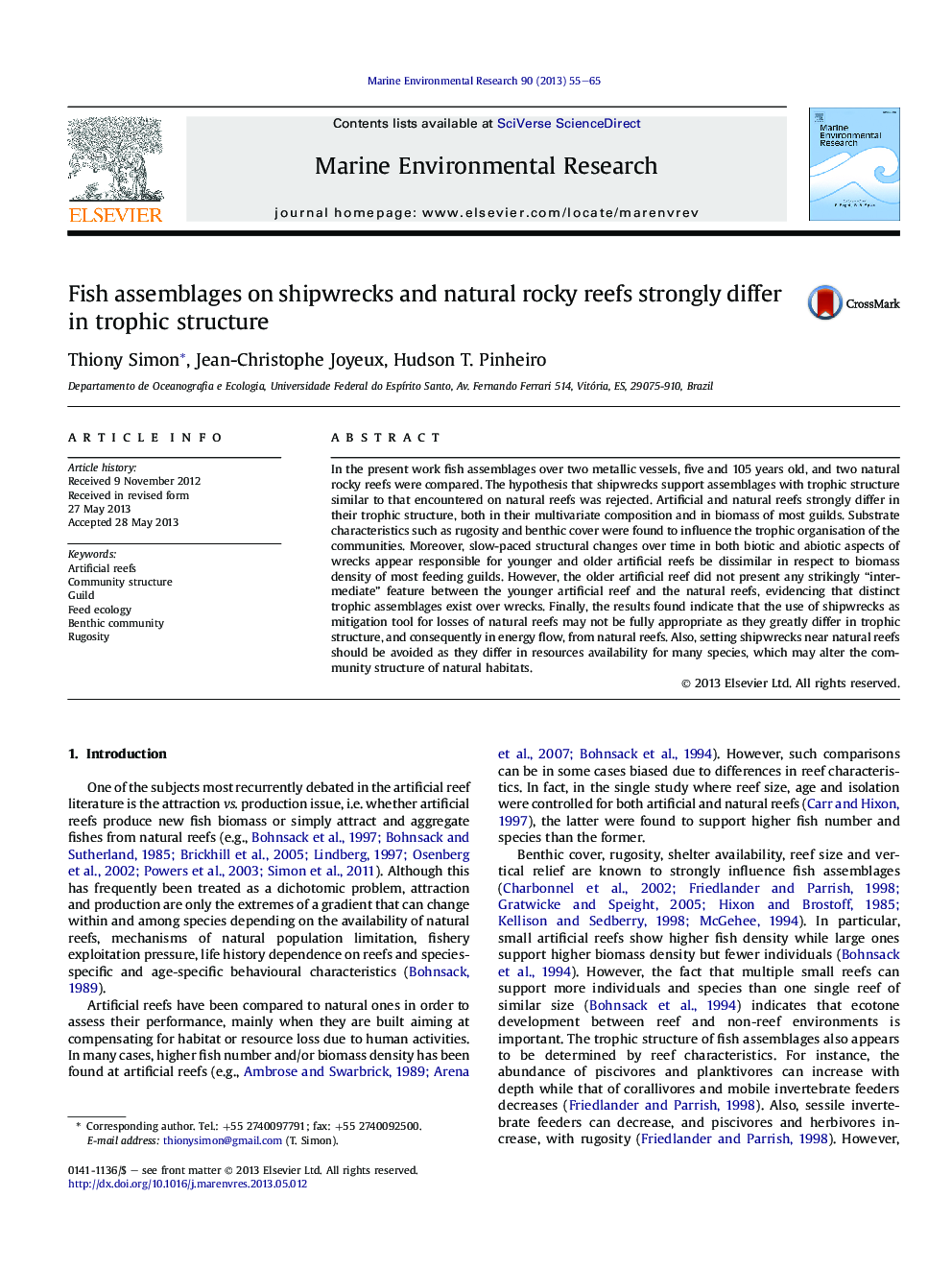| Article ID | Journal | Published Year | Pages | File Type |
|---|---|---|---|---|
| 6387947 | Marine Environmental Research | 2013 | 11 Pages |
â¢Fish assemblages on artificial and natural reefs differ in trophic structure.â¢Metallic artificial reefs of different ages support distinct fish assemblages.â¢Underwater aging of artificial reefs does not promote similarity to natural reefs.â¢The use of shipwrecks as mitigation tool may not be fully appropriate.
In the present work fish assemblages over two metallic vessels, five and 105 years old, and two natural rocky reefs were compared. The hypothesis that shipwrecks support assemblages with trophic structure similar to that encountered on natural reefs was rejected. Artificial and natural reefs strongly differ in their trophic structure, both in their multivariate composition and in biomass of most guilds. Substrate characteristics such as rugosity and benthic cover were found to influence the trophic organisation of the communities. Moreover, slow-paced structural changes over time in both biotic and abiotic aspects of wrecks appear responsible for younger and older artificial reefs be dissimilar in respect to biomass density of most feeding guilds. However, the older artificial reef did not present any strikingly “intermediate” feature between the younger artificial reef and the natural reefs, evidencing that distinct trophic assemblages exist over wrecks. Finally, the results found indicate that the use of shipwrecks as mitigation tool for losses of natural reefs may not be fully appropriate as they greatly differ in trophic structure, and consequently in energy flow, from natural reefs. Also, setting shipwrecks near natural reefs should be avoided as they differ in resources availability for many species, which may alter the community structure of natural habitats.
